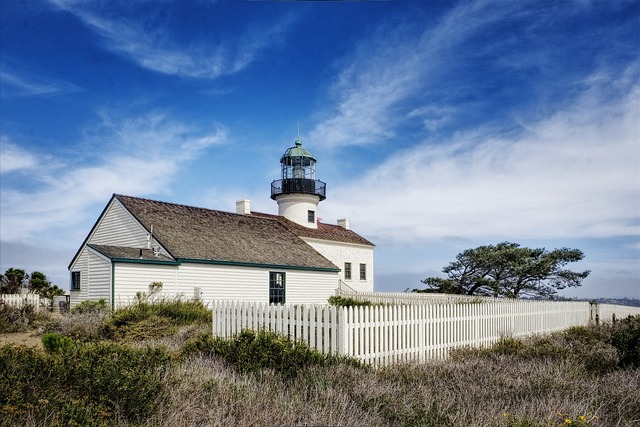In New Bedford, a fence not only defines property boundaries but also enhances curb appeal and provides security. However, maintaining fences against weather, pests, and foot traffic can be challenging. This article guides homeowners through the process of repairing and installing fences in New Bedford, from identifying common issues like rot and damage to selecting durable materials, understanding installation techniques, learning repair methods, and mastering maintenance practices that ensure longevity and aesthetic appeal.
- Understanding Common Fence Issues in New Bedford
- Choosing the Right Fencing Material for Your Property
- The Installation Process: Step-by-Step Guide
- Repair Techniques to Extend Fence Lifespan
- Maintenance Tips for Longevity and Aesthetics
Understanding Common Fence Issues in New Bedford
In the coastal city of New Bedford, fences play a vital role in defining property boundaries, enhancing security, and adding aesthetic appeal to homes and businesses. However, they often face unique challenges due to the region’s weather patterns and coastal environment. Understanding these common fence issues is essential for homeowners and business owners alike. One of the primary concerns is corrosion and rust, especially with metal fences, accelerated by salt air and moisture.
Another prevalent issue is damage from strong winds and storms, which can bend or topple even sturdy fences. Wood fences may suffer from rot and insect infestations if not properly maintained, while concrete fences might crack or heave due to shifting soil. Identifying these potential problems beforehand allows for proactive maintenance and repairs, ensuring the longevity of New Bedford’s fencing structures.
Choosing the Right Fencing Material for Your Property
When considering fence repair or installation, selecting the right material is a crucial step in ensuring both functionality and aesthetic appeal. The ideal fencing material should align with your property’s unique needs and personal style. For instance, wood offers a classic look, requiring regular maintenance but providing excellent privacy. Metal fences, on the other hand, are durable and low-maintenance, well-suited for areas exposed to harsh weather conditions.
PVC and composite materials are versatile options known for their resistance to rot, decay, and rust. They come in various styles and colors, making them suitable for both residential and commercial properties. Consider your climate, budget, and desired level of maintenance when choosing a fencing material that will enhance the value and security of your property.
The Installation Process: Step-by-Step Guide
The installation process for a new fence begins with thorough site preparation. This involves clearing the area, removing any existing structures or debris, and ensuring proper drainage to prevent water damage. Next, our experts measure and mark out the perimeter of your desired fence layout, taking into account any gates or entry points you may require.
Using high-quality materials, we start by installing the posts, which serve as the foundation of your fence. These are securely anchored in place, providing a sturdy base. Once the posts are set, we attach the vertical rails, creating a framework for the panels. Then, we carefully fit and secure the chosen fence panels, ensuring they align perfectly. The final step involves adding any additional features like gates, locks, or decorative elements, tailored to your specific preferences and design.
Repair Techniques to Extend Fence Lifespan
Extending the lifespan of your fence involves a combination of regular maintenance and effective repair techniques. One crucial method is inspecting the fence for any signs of damage, such as broken or loose boards, rot, or rusted posts, at least once a year. Addressing these issues promptly prevents minor problems from escalating into major repairs. For example, replacing a few rotten sections can be much easier and less costly than waiting until the entire fence needs to be constructed again.
Additionally, sealing and painting the fence regularly can protect it from the elements. Water-repellent treatments and high-quality paint or stain not only enhance the aesthetic appeal but also seal in moisture, preventing wood rot and prolonging the structural integrity of the fence. These preventive measures, coupled with routine cleaning to remove debris and overgrowth, ensure your fence remains robust and secure for many years to come.
Maintenance Tips for Longevity and Aesthetics
Regular maintenance is key to keeping your fence in top condition, ensuring its longevity and maintaining its aesthetic appeal. Start by inspecting your fence regularly for any signs of damage, such as broken boards or loose posts. Addressing issues early can prevent small problems from turning into major repairs. Keep an eye out for rust on metal components, especially if your fence features chain-link or ironwork. A quick coat of paint or primer can protect against further corrosion and maintain the fence’s visual appeal.
Additionally, cleaning is essential to preserving the fence’s appearance. Use a soft brush or cloth to remove dirt, dust, and debris that may accumulate over time. Avoid using high-pressure washers, as they can damage the fencing material. Keep vegetation at bay by trimming nearby plants and trees to prevent them from growing into the fence structure, which could lead to rot or damage.
